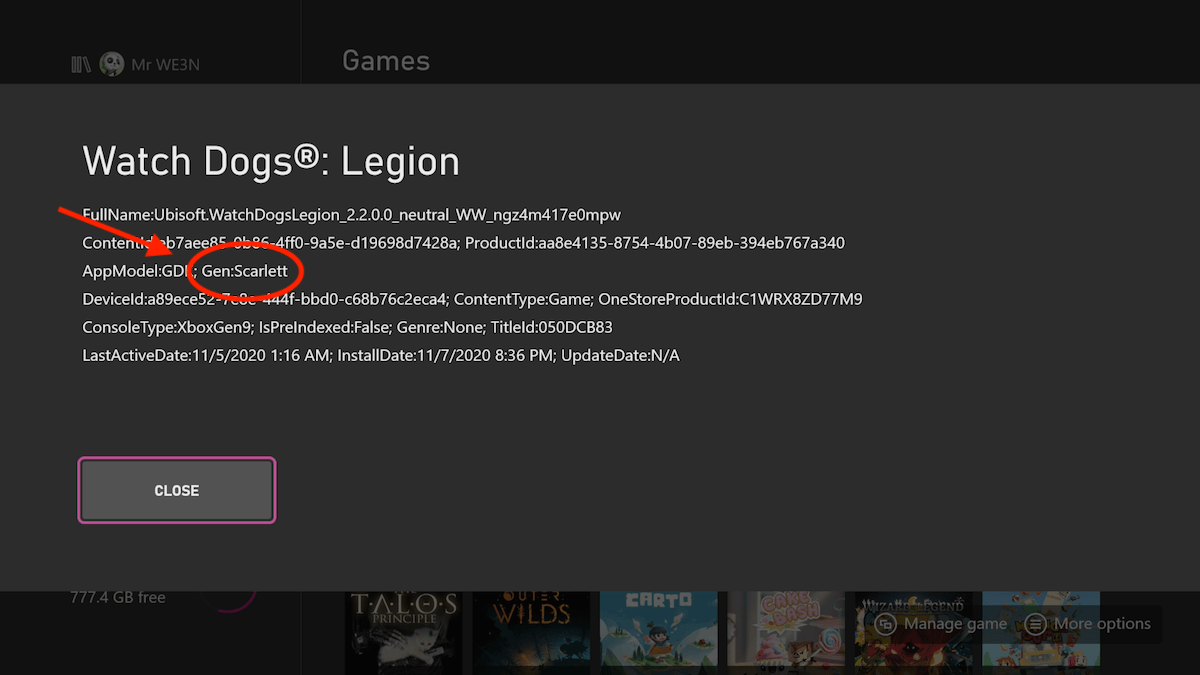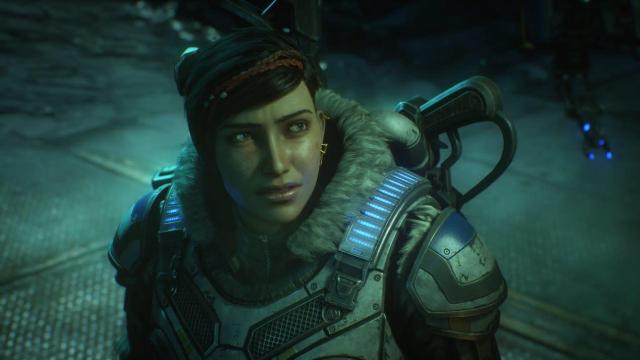The Xbox Series X and S, which Microsoft will officially release tomorrow, are releasing with an interesting caveat. There’s no big game anchoring the launch, no Halo or Forza or Gears to hang sales on (other than a console release for Gears Tactics). Instead, Microsoft is trumpeting the system’s beefed-up tech, citing 30 or so games that will be “Optimised” to make the most of it from the get-go.
In the runup to launch, Microsoft has also touted the Xbox’s proprietary “Smart Delivery” technology, which purports to automatically give players access to the most cutting-edge version of games they own, so long as the developers support it. But the waters are muddied. Part of that is a result of the general confusion that comes in-hand with new things. (“So, it just works automatically? You don’t have to click an extra button or buy a new copy or anything?”) Another part is the roadmap for these next-gen upgrades. It’s not a mess, but it’s not exactly a crystal clear picture, either.
[referenced id=”1191566″ url=”https://www.kotaku.com.au/2020/11/xbox-series-x-the-kotaku-review-2/” thumb=”https://www.gizmodo.com.au/wp-content/uploads/sites/3/2020/11/06/toh7gmfzqawmiffv7kc21-300×169.jpg” title=”Xbox Series X: The Kotaku Review” excerpt=”The Xbox Series X does not feel like the kind of machine we usually get at the start of a new generation, when we’re used to clean breaks with radical new hardware that basically starts our time with a PlayStation, Xbox, or Nintendo device over.”]
For instance, Destiny 2, which is releasing a big expansion on November 10 alongside the new Xbox consoles, will receive a souped-up next-gen version — except not at launch. That’s coming on December 8. Similarly, a next-gen version of Marvel’s Avengers was planned for launch-day availability. Then, last month, the developer pushed that version back to 2021, citing the understandable difficulties that come with working from home (during a pandemic, in an office on the west coast, which has been ravaged by fires on top of everything else). On the flip side, next-gen versions of some cross-gen games — including Borderlands 3, Assassin’s Creed Valhalla, and Fortnite — will be available on the Xbox Series consoles from day one.
In short, it’s a lot to keep in your head at once, and can certainly inspire confusion. If you’ve trained your eyes in the art of ray-tracing and 4K resolutions, sure, you can probably tell whether or not you’re playing a next-gen game just by looking at it. For the rest of us, it’s not so easy. Here are two strategies that will help.
Method One: The Simple Way
Let’s spell this out as plainly as possible:
- Press the Xbox button.
- Go to “My Games and Apps.” (You might also just see this icon on your Xbox dashboard.)
- Under the “Games tab,” flick over to “Filter.” In the top row, it’s the third icon from the right, with a symbol that looks somewhat like one of the funnels you used in high school chemistry.
- Click on it, and scroll down to “all console types.”
- Switch that to “Optimised for Xbox Series X|S games.” You should see this happen:
Voila!
There are two other filter options in there. You can list purely the last-gen games, or you can get your #tbt on and only show games from the Xbox 360 and original Xbox era. Going back 13 years or more might not sound so appealing, given the oooh-shiny-ness of owning a next-gen console, but who knows: You might get a hankering to replay the Fable trilogy before the next game comes out.
Method Two: The Cool Way
Back in 2012, Kotaku reported that the codename for the then-unannounced Xbox 360 successor was straight out of a John Wayne film: “Durango.” That machine, of course, turned out to be the Xbox One. Before the Xbox Series X and S were announced, Microsoft referred to its next-gen offerings by another codename: “Scarlett.” I’m not just taking you for a leisurely stroll down memory lane. These terms can serve a practical purpose — to a point.
In your Xbox’s game library, hover over a game you’re curious about. Hit the menu button (the button formerly known as “Start”). Scroll down to “file info.” That should pull up an inscrutable string of letters of numbers. But look closely, and, on the third line, you’ll spot one of those two codenames.

All of the Xbox One games currently installed on my Xbox Series X list “Gen:Durango” in the file info. (Same goes for the two Xbox 360 titles installed on my console, Fable III and the original Mass Effect.) That’s not so surprising for the games that don’t have updates in the pipeline, but it’s helpful to see it for those that are releasing across generations. For instance, last week, Watch Dogs: Legion — a game that will receive a next-gen upgrade tomorrow for the Xbox Series X and S, and on Thursday for the PlayStation 5 — listed “Gen:Durango” in the file info. Over the weekend, my console automatically downloaded a 37.9GB update for the game, which seems to have overwritten its previous 37.9GB file size. Afterward, Watch Dogs: Legion started showing up when I filtered by games by those “Optimised for Xbox Series X|S.” In the file info: “Gen:Scarlett.”
Sure enough, when I filter my library by “Optimised” games, six of the seven titles in that category — Forza Horizon 4, Gears 5, Assassin’s Creed Valhalla, Yakuza: Like A Dragon, Watch Dogs: Legion and Gears Tactics — have “Gen:Scarlett” in the file info. Curiously, one game, the multiplayer pirate adventure romp Sea of Thieves, does not. What’s there instead? “Gen:Durango.” In other words, feel free to use this method as a cool party trick, but exercise scepticism if you’re relying on it practically.
More Xbox Series X:
[referenced id=”1192103″ url=”https://www.kotaku.com.au/2020/11/how-to-make-the-most-of-your-xbox-series-xs-internal-storage/” thumb=”https://www.gizmodo.com.au/wp-content/uploads/sites/3/2020/11/10/wftv9kdgjoeyn7v9umyb-300×169.jpg” title=”How To Make The Most Of Your Xbox Series X’s Internal Storage” excerpt=”For such a big console, the Xbox Series X is pretty small. On paper, it has a 1TB SSD for internal storage, but 198GB of that is set aside for the operating system and other essential files. Couple that with the fact that games are bigger now than ever — …”]
[referenced id=”1191699″ url=”https://www.kotaku.com.au/2020/11/heres-how-fast-games-load-on-the-xbox-series-x-and-s/” thumb=”https://www.gizmodo.com.au/wp-content/uploads/sites/3/2020/11/06/uya7rhx0o4u9a4yjsmvg-300×169.png” title=”Here’s How Fast Games Load On The Xbox Series X And S” excerpt=”Much ado has been made about the guts of the Xbox Series X and S, two new next-gen consoles Microsoft will release next week. It’s all “velocity architecture” this and “teraflops” that — technical stuff Microsoft says will cut loading times dramatically. But lingo and lofty promises are secondary to…”]
[referenced id=”1191603″ url=”https://www.kotaku.com.au/2020/11/how-the-xbox-series-xs-quick-resume-feature-works-and-doesnt-work/” thumb=”https://www.gizmodo.com.au/wp-content/uploads/sites/3/2020/11/06/a4omvavlzwk3hxku9hod-300×170.jpg” title=”How The Xbox Series X’s ‘Quick Resume’ Feature Works” excerpt=”Among all of the next-gen features touted for the Xbox Series X (and S), few are more promising than Quick Resume. On paper, Quick Resume grants you the ability to juggle several games in a suspended state at a system level, at which point you can load them in seconds,…”]
[referenced id=”1191592″ url=”https://www.kotaku.com.au/2020/11/you-can-only-use-364gb-of-the-xbox-series-ss-512gb-storage/” thumb=”https://www.gizmodo.com.au/wp-content/uploads/sites/3/2020/11/06/lpyejd73utqhz06dzmte-300×171.png” title=”You Can Only Use 364GB Of The Xbox Series S’s 512GB Storage” excerpt=”When the Xbox Series S was first (officially) revealed in September, the general consensus could be summed up as such: “Aww!!” That’s not just a remark on the next-gen console’s diminutive physical size (and cheaper price, $US499 ($684) compared with the Xbox Series X’s $US749 ($1,026)). That could have also been commentary…”]

Leave a Reply